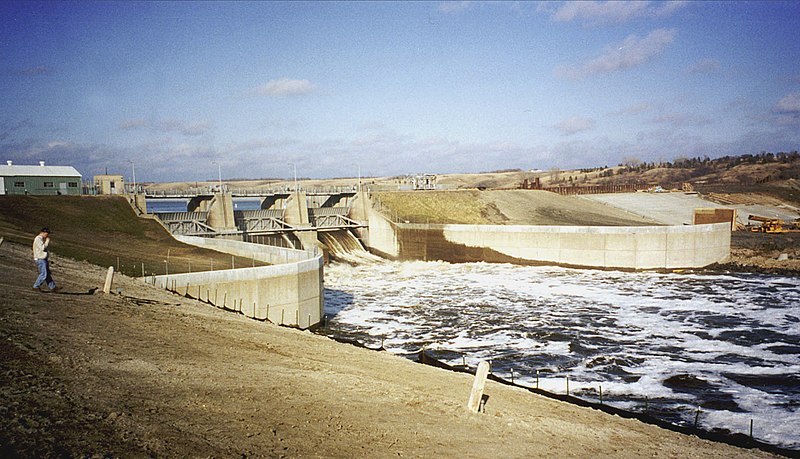Detrital gold has been found in two different occurrences within the state of North Dakota Manitoba North Dakota North Dakota Sheyenne River Sheyenne River
 |
| Baldwin Dam on the Sheyenne River in North Dakota. This river contains detrital gold that is weathered from conglomerates that were washed down from the Black Hills of South Dakota |
Conglomerate and other sedimentary rocks are not especially rare places in which detrital gold is found. This is gold that has weathered out of older crystalline rocks and carried away by the action of running water to be deposited as placer gold in stream gravel that later become cemented in place for me in a fossilized placer deposit. The largest gold deposit on earth, the Witwatersrand of South Africa, is gold in a conglomerate matrix. It is been recently discovered that the source for the gold in this deposit came from outwash in braided stream channels from an ancient mountain range. The geologists who pinpointed the origin of this gold used the half-life of an isotope of iridium that was found with the gold. This also explains why the gold was found in stringers throughout the deposit.
It is common to find uranium associated with this type of deposit as well as rare earth elements (REE). It is older of this type that is mind that Elliot Lake , Ontario North America .
The first gold rush in North Dakota Lake Souris Fort Ransom Ransom County